Are you at risk?
To have COPD!!
Nothing is more important than your health. When you have a chronic condition, staying healthy is often more difficult. This booklet provides you with valuable information and guidance to help you take control of your health.
Breathe….
The lung function is to breathe. Every day we are breathing in and out over 8000 liters of air. This allows taking in oxygen and removing waste gases from body, such as carbon dioxide.
What is COPD?
Chronic obstructive pulmonary disease (COPD) is a major cause of morbidity and mortality throughout the world.
Chronic obstructive pulmonary disease, a common preventable and treatable disease and characterized by airflow obstruction / limitation that is usually progressive. This difficulty can lead to shortness of breath. COPD is a term that used to describe chronic bronchitis, emphysema or a combination of these two conditions. Chronic bronchitis – these symptoms are present for at least three months in each of two years. Emphysema is a chronic respiratory disease characterized by an abnormal increase in the size of the air sacs in the lungs, causing a decrease in the lungs ability to work correctly and often breathlessness.
COPD is different from asthma but it can be difficult to distinguish between COPD and chronic asthma.
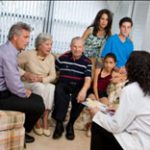
What causes COPD?
The most common risk factor for COPD is Tobacco smoking. Others such as
- Indoor and outdoor pollution
- Occupational dusts and chemicals
- Alpha one antitrypsin deficiency – is suspected when there is early onset of COPD

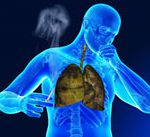
What are the symptoms of COPD?
COPD can cause symptoms that vary from day to day and from one patient to another. The main symptoms of COPD are:
- Breathlessness
- Cough
- Sputum (Phlegm) production
- Wheezing



How is COPD diagnosed?
COPD is diagnosed by a doctor on the basis of symptoms and results of tests such as
- Lung Function Test
- Spirometry – is the most useful tests used to confirm the diagnosis of COPD. Spirometry should be performed before and after bronchodilator for confirmation of diagnosis.
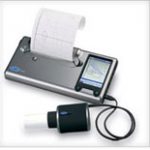
- Chest radiograph

- Other tests such as complete blood count to rule out anemia, ECG and oxygen saturations.
Exacerbation attacks of COPD
The symptoms of COPD may change from time to time or may the symptoms deteriorate significantly than the usual day-to-day variation. These events are termed as exacerbation attacks. It is trigger with cold or viral infection. These are more common during the winter months. The key symptoms are:
- Worsening Breathlessness
- Cough, increased sputum production and colour
- Worsening wheeze
- Increased requirements for reliever medication
These events often require a change in treatment for which required to a doctor. A simple change in medications can be done through phone call in mild COPD cases. This is called Self Management

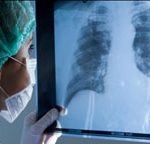
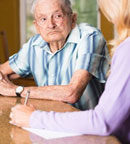
How can COPD patients stay well?
- Depending on the stage of COPD, the medications will start…
- There is broad range of treatments for COPD. The treatment is depending on the stage of COPD cases [on symptoms and Spirometry test]. The aims of treatments are:
- To minimise day to day symptoms and ensure a good quality of life
- To maintain an active lifestyle
- To reduce the number and severity of exacerbations
- To reduce the risk of having unscheduled visit to the hospital or your doctor due to uncontrolled COPD.
COPD Therapy
- Quit smoking – this is most important but difficult on patients
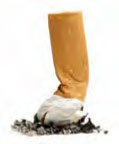
- Pharmacological therapy
The treatment for COPD is inhaler. These will be prescribed by doctor dependent on the severity of symptoms. The main types of treatments are
- Short acting relievers

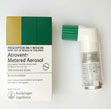
- Long acting relievers

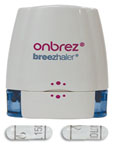

- Preventers and combination inhalers
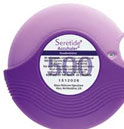

- Other combination therapies will come in the future.
Devices and Spacers

There is a range of inhaler devices to help deliver the drugs to the lungs to increase the effectiveness of inhaler. This helps the medication get into the lungs and reduces the risk of side effects caused by the drug depositing in the mouth or throat.
Theophylline
This drug acts in a similar way to bronchodilators but is taken as a tablet. It is used regularly and offers symptomatic benefit to some patients, particularly if wheezing is common. Levels of this drug can vary in the body from one patient to another and may need to be monitored by your doctor with a blood test.
Other treatments
- Nebulizers
These devices can deliver a larger dose of bronchodilator (reliever) medication when needed. Your doctor may prescribe you nebulizer therapy such as (salbutamol or ipratropium) if there is attack of an exacerbation or with a very severe symptoms.
Oxygen
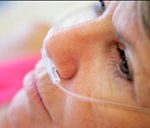
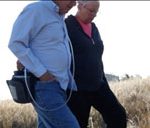
Oxygen may be prescribed for home via a concentrator (Long-Term Oxygen Therapy) or ambulatory oxygen via a small cylinder to maintain the activity levels. The doctor will advise on the appropriate use of oxygen. Oxygen is prescribed only for those patients who will benefit from it and should only be used as prescribed. The prescription will include the number of hours and the flow rate to be delivered.
Vaccination
- Influenza Vaccination – As someone with COPD it is recommended that you receive an annual influenza vaccine in the autumn.
- Pneumonia Vaccination
- Non pharmacological therapy
Pulmonary Rehabilitation
Pulmonary rehabilitation is now widely available programme for patients with COPD. It focuses on exercise and education and helping to live with the disease. The Programme is a 6 to 8 week programme of group classes at the hospital or clinic or sport centers. The classes are run by expert nurses or physiotherapists and can really make a difference to the health.
After completing an initial course some centers will help to maintain with weekly classes.
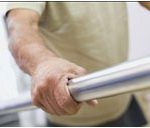
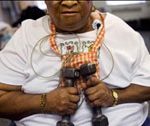
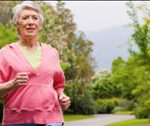
Eating Well
Maintaining a healthy diet and an ideal weight are important steps in keeping healthy with COPD.

Five things everyone at risk should do…
- Quit smoking
- Avoid exposure to pollutants (Things irritate your lungs such as dust, strong perfumes and cigarette smoke)
- Visit your doctor regularly
- Protect yourself from Flu
- Learn more so you can breathe better

Contacts and Resources
Please do not hesitate to ask questions if you do not understand or want more specific information.
Elia Clinic contact details:
Tel: 00973 17692323
Dr. Suad Al Monfaradi, MBBS, DCTM, MSc. (UK)
Pulmonologist & General Physician
